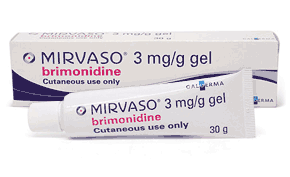 Ouch – the inflammation caused by rosacea can be painful and embarrassing. Rosacea is normally characterised by episodes of intense flushing, which can progress to burning and stinging, permanent redness, spots, and the blood vessels of the skin being visible.
Ouch – the inflammation caused by rosacea can be painful and embarrassing. Rosacea is normally characterised by episodes of intense flushing, which can progress to burning and stinging, permanent redness, spots, and the blood vessels of the skin being visible.
It is a relapsing condition, with periods of intensity and times when symptoms are much less severe.
Treatment of rosacea is often related to what triggers it for different people. It is not a well understood condition, but is thought to be related to possible factors like blood vessel abnormalities, skin peptides, microscopic mites, helicobacter pylori bacteria, and genetics.
They may not be direct causes of the condition, but those with rosacea have reported triggers including the following:
- Sunlight
- Hot or cold weather
- Spicy foods
- Stress
- Exercise
- Hot baths
- Humidity
The reddening of the skin often can’t be avoided due to the wide range of triggers that could exacerbate it. There are several treatment options for the condition, which usually begin with topical medications, including metronizadole cream or gel, azelaic acid cream or gel, and ivermectin cream. These are normally applied once or twice daily, and may take several weeks to take effect. Their side effects may include itchiness, burning or stinging and dry skin. Low dose doxycycline 40mg (Efracea) is also used to treat moderate to severe papules and pustules of rosacea.
 There is also Mirvaso gel (brimonidine), which is a relatively new treatment and can be purchased here on the Dr. Fox website. Mirvaso works a bit differently than the other topical treatments, by restricting the dilation of blood vessels of the face. It has an almost immediate effect, with relief normally starting about 30 minutes after the gel is applied. The improvement lasts for about 12 hours, and makeup can be applied on top of the gel once it has dried.
There is also Mirvaso gel (brimonidine), which is a relatively new treatment and can be purchased here on the Dr. Fox website. Mirvaso works a bit differently than the other topical treatments, by restricting the dilation of blood vessels of the face. It has an almost immediate effect, with relief normally starting about 30 minutes after the gel is applied. The improvement lasts for about 12 hours, and makeup can be applied on top of the gel once it has dried.
Mirvaso was introduced to the UK market with quite a bit of fanfare, being the only gel that can eliminate redness and discomfort so quickly – and this means a lot to those suffering from the embarrassing redness and painful burning sensation. Only a pea size amount is required, and a tube of the gel lasts for about two months.
People with rosacea can also do their best to avoid their unique triggers and steer clear of oily skin creams and topical steroids. Long-term oral antibiotics or anti-inflammatory medications may also be prescribed, and laser treatment can be used to treat persistent areas of redness on the skin.
If you are concerned about redness of the skin on the face, visit your GP to determine if you have rosacea, and pay attention to what may be triggering it.



